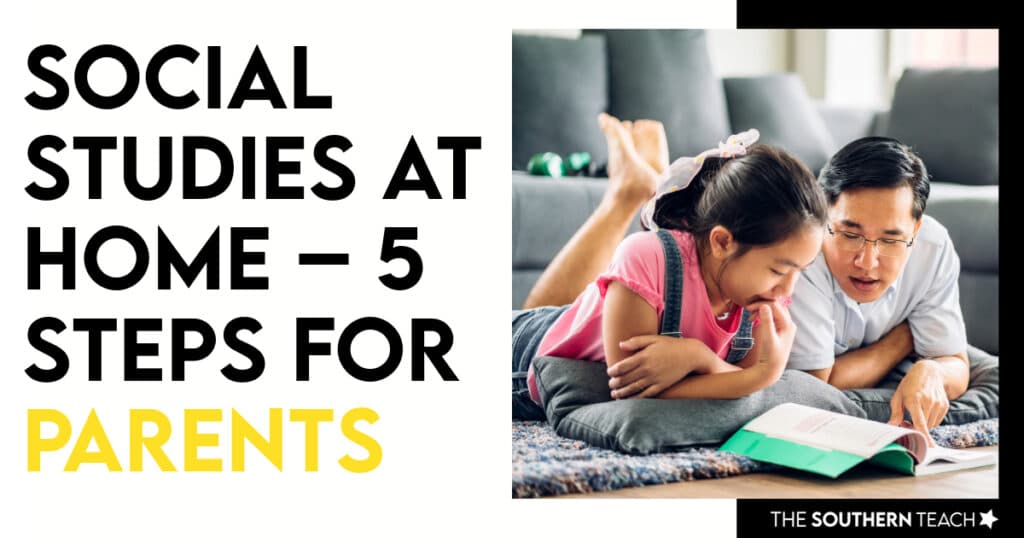Share This Post:
As an upper elementary social studies teacher, you understand the importance of creating a classroom environment where every student feels valued and engaged.
One powerful way to achieve this is by incorporating Howard Gardner’s theory of Multiple Intelligences into your teaching practices. This approach not only recognizes the diverse strengths of your students but also provides opportunities for each child to thrive in their unique way.
What is the Theory of Multiple Intelligences?
Howard Gardner first introduced the Theory of Multiple Intelligences in 1983. Before this theory, intelligence was often viewed as a single, fixed attribute measured by IQ tests.
Gardner challenged this notion, proposing that intelligence is multifaceted and that each individual possesses a unique combination of up to eight different intelligences. These intelligences can be innate or developed through experiences, and they vary from person to person.

The Eight Intelligences
Here’s a breakdown of Gardner’s eight intelligences and the characteristics associated with each:
Verbal-Linguistic Intelligence:
- Characteristics: Strong in reading, writing, and understanding spoken language. These students often have a rich vocabulary and excel in learning new languages.
- Potential Careers: Teacher, lawyer, journalist, writer.
Logical-Mathematical Intelligence:
- Characteristics: Good at reasoning, problem-solving, and understanding patterns. These students often enjoy math and science.
- Potential Careers: Scientist, engineer, accountant, computer programmer.
Visual-Spatial Intelligence:
- Characteristics: Able to visualize and create mental images easily. These students are typically strong in activities involving maps, charts, and art.
- Potential Careers: Artist, architect, graphic designer, pilot.
Naturalistic Intelligence:
- Characteristics: Connected with nature, these students enjoy outdoor activities and have a keen interest in plants, animals, and the environment.
- Potential Careers: Biologist, environmentalist, chef, gardener.
Bodily-Kinesthetic Intelligence:
- Characteristics: Strong in physical activities, these students learn best through movement and hands-on activities.
- Potential Careers: Athlete, dancer, mechanic, physical therapist.
Musical Intelligence:
- Characteristics: Able to recognize and create musical patterns easily. These students may have a good ear for music and enjoy singing, playing instruments, or composing music.
- Potential Careers: Musician, composer, DJ, music teacher.
Interpersonal Intelligence:
- Characteristics: Good at understanding and interacting with others. These students often excel in group work and social activities.
- Potential Careers: Counselor, salesperson, politician, teacher.
Intrapersonal Intelligence:
- Characteristics: Strong self-awareness and the ability to reflect on their own emotions and motivations. These students often enjoy independent study.
- Potential Careers: Psychologist, writer, philosopher, researcher.
Incorporating Multiple Intelligences into Your Classroom
To effectively support all eight intelligences in your classroom, it’s helpful to integrate a variety of activities that cater to different learning styles. Here are some strategies and activity ideas for each intelligence:
Verbal-Linguistic Intelligence:
- Activities: Book reports, reading and writing responses, oral presentations, debates, and storytelling.
Logical-Mathematical Intelligence:
- Activities: Problem-solving tasks, puzzles, graphic organizers, timelines, and hands-on experiments.
Visual-Spatial Intelligence:
- Activities: Creating visual aids like charts and maps, drawing, building models, and using color-coded materials.
Naturalistic Intelligence:
- Activities: Nature walks, field trips, caring for a class pet or plants, and incorporating nature-based themes into lessons.
Bodily-Kinesthetic Intelligence:
- Activities: Role-playing, using manipulatives, physical movement activities, and hands-on experiments.
Musical Intelligence:
- Activities: Writing songs, listening to music related to the content, rhythm-based games, and creating musical presentations.
Interpersonal Intelligence:
- Activities: Group projects, collaborative discussions, peer teaching, and social role-playing.
Intrapersonal Intelligence:
- Activities: Reflection journals, self-assessment checklists, independent research projects, and quiet study time.

Learning Styles Overlap and Efficiency
One of the great advantages of using Multiple Intelligences in your classroom is the overlap between intelligences. Many activities support multiple intelligences at once, making it easier to plan and manage diverse learning experiences without overwhelming yourself or your students!
For example, a project that involves both writing and drawing can engage students with verbal-linguistic, visual-spatial, and even logical-mathematical intelligences simultaneously.
Final Thoughts
Incorporating Multiple Intelligences into your classroom is a powerful way to honor the diverse strengths and needs of your students. By offering a variety of activities that cater to different learning styles, you can create an inclusive environment where every child feels valued and capable.
Whether you’re just beginning to explore Multiple Intelligences or looking to deepen your understanding, remember that the goal is to help each student find their path to success!
For those interested in a deeper dive into differentiating instruction using learning styles, I offer a comprehensive four-part workshop as part of my membership program and a Multiple Intelligences for Big Kids resource.
This workshop provides step-by-step guidance on identifying student strengths, tailoring assignments, and implementing effective learning style activities. If you’re not yet a member, consider joining the waitlist to gain access to this valuable resource.
Embrace the diversity in your classroom, and watch your students thrive as they discover their unique intelligences!
kirsten hammond
Kirsten is a former 3rd and 5th grade teacher who loves helping upper elementary teachers by creating resources and sharing ideas that are engaging, research-based, and TEKS-aligned. She is a work-from-home mama of 3 rambunctious little ones and loves running, true crime, and lots of coffee.


















